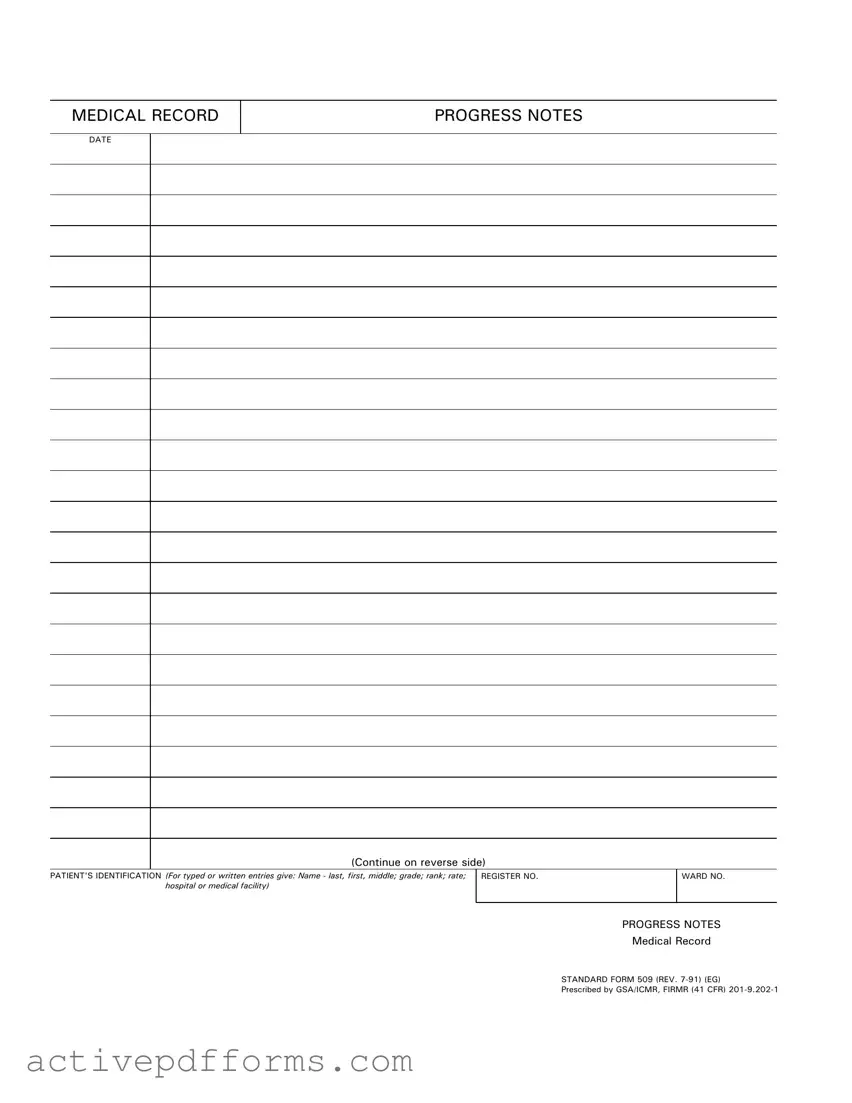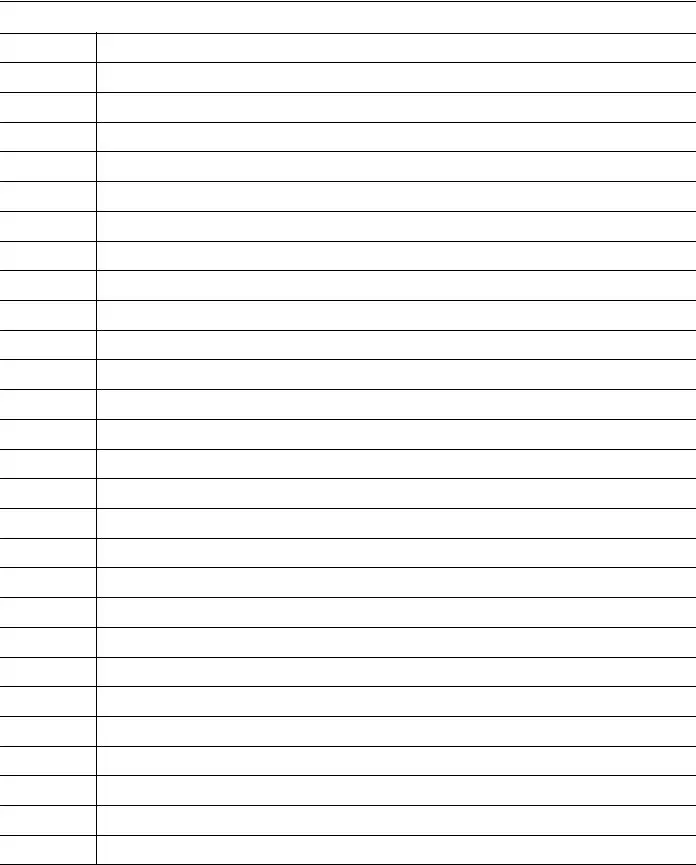The Progress Notes form, a critical document in the healthcare setting, plays a pivotal role in documenting the ongoing care and condition of patients. Embedded in the intricacies of medical documentation, this form, standardized as STANDARD FORM 509 (Rev. 7-91), is designed not only to provide a chronological account of a patient's medical history and care but also to ensure continuity in the treatment provided by various healthcare professionals. It requires thorough details such as the patient’s full name, including the last, first, and middle names, along with other identification markers like grade, rank, rate, and the specific hospital or medical facility handling the case. The form's structure mandates the inclusion of a register number and ward number, serving as a crucial reference point in the patient's medical record. Progress notes are typically characterized by entries that detail patient interactions, observations made by healthcare professionals, treatment plans or changes to existing ones, and any other relevant medical information. With a place for entries on the reverse side as well, this form ensures comprehensive coverage of all aspects related to the patient's care, aiding in the seamless communication among members of the medical team and facilitating a cohesive strategy towards patient health management. Employed across various healthcare settings, the usage of this form is regulated by guidelines set forth by the General Services Administration (GSA) and the Intergovernmental Committee on Medical Records (ICMR), underlining its significance in maintaining high standards of medical recording and patient care.


